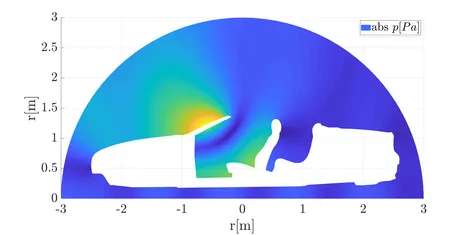| Lecturer (assistant) | |
|---|---|
| Language of instruction | German |
| Dates | See TUMonline |
Content

This course provides an insight into numerical methods applied to problems in acoustics. The focus is on the finite element method (FEM) and the boundary element method (BEM). Additionally the course builds a base for writing your own FE/BE code. The course starts with the derivation of the basic equation for linear acoustics in the frequency range and the corresponding boundary conditions. Furthermore, the FEM and BEM formulations are explained and the procedure demonstrated using a simple, one-dimensional example. The modelling of acoustic sources is also presented. To obtain a far-reaching knowledge of numerical solution techniques, the calculation and assembly of the BEM matrices are extensively discussed. In addition, exterior Helmholtz problems, symmetry conditions and periodicity are outlined. To couple structural vibrations with sound propagation in a fluid, the necessary equations are derived towards the end of the course. The final chapter deals with the panel contribution analysis. In the exercise to the course, the students are writing an FEM code on their own and working on a scientific final project.
- ... apply numerical methods to problems in vibroacoustics
- ... identify and model a broad spectrum of problems in vibroacoustics
- ... evaluate the limits of numerical models
- ... program a finite element or boundary element method code on their own
Organizational Matters
Lecture:
- weekly regular class, 2 SWH duration
- presentation of theory and fundamental relations of vibro-acoustic systems using slides and additional demonstration of specific course topics by use of the institute’s acoustic apps
Exercise:
- weekly regular class, 1 SWH duration
- repetition and consolidation of the lecture topics by a presentation with slides
- self-reliant execution of exercises; the students are encouraged to implement their own MATLAB code to solve particular exercises and a final project
Examination:
- depending on the number of participants, the examination will be held as an oral exam (duration: approx. 20 minutes) or a written exam (duration: 90 minutes)
Recommended Previuous Knowledge
- An Introduction to Vibroacoustics
- Finite Elements
The above mentioned recommended previous knowledge is not obligatory to successfully complete this course. If you are indecisive about your participation in this course, please contact the responsible course assistant.